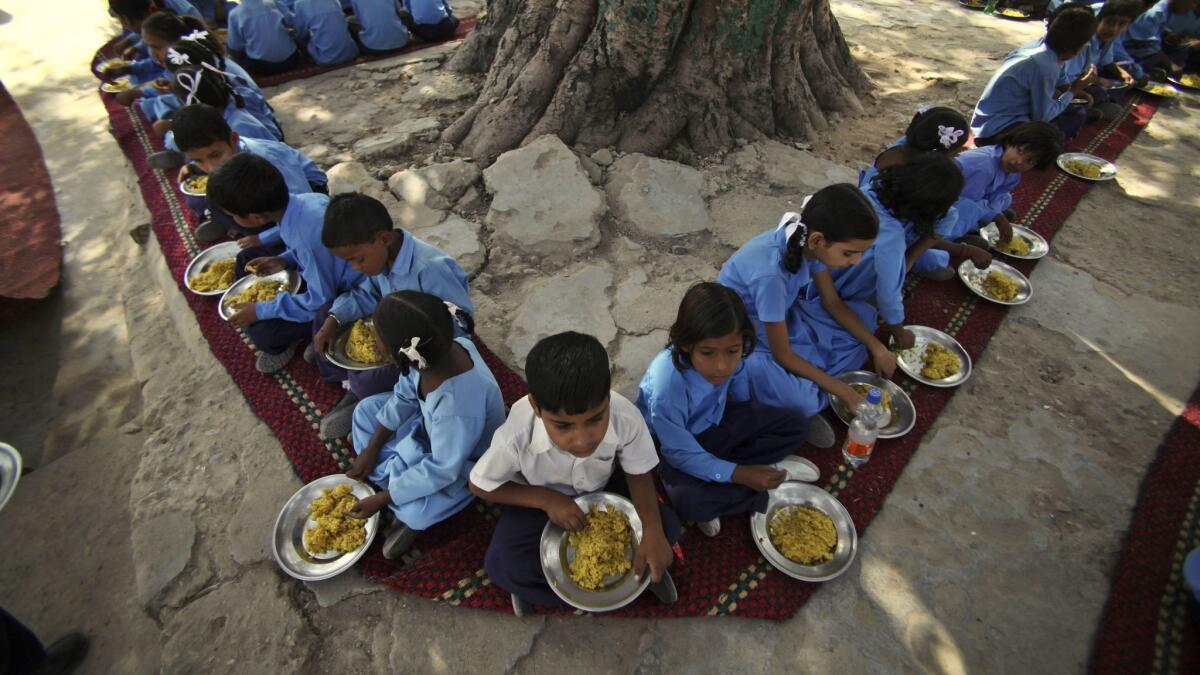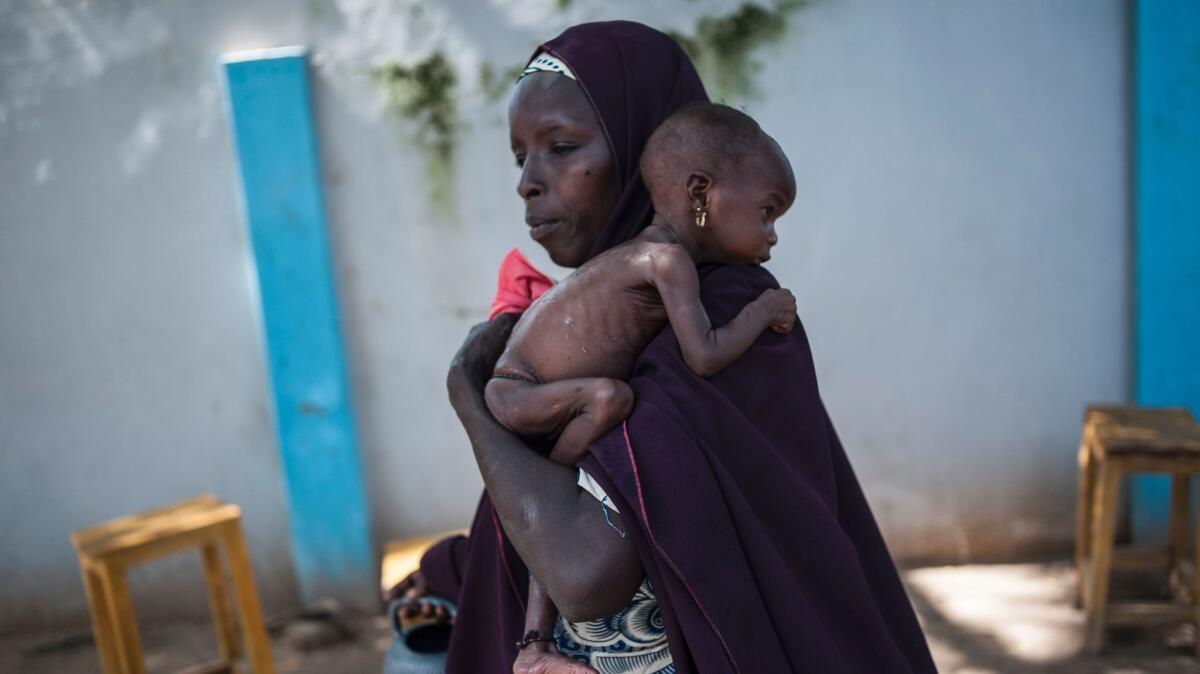On World Hunger Day, a look at why so many people don’t get enough food

The United Nations has set a goal of eradicating hunger and malnutrition by 2030. Although the prevalence of hunger has declined in recent years, the lack of access to adequate and nutritious food remains an insatiable challenge across the globe.
As World Hunger Day is observed on Sunday, here’s a look at what’s behind the continuing prevalence of hunger around the world.

1 in 9 people go to bed hungry each night
That’s 795 million people on the planet who suffer from chronic hunger, according to the United Nations World Food Program The U.N. forecasts that an additional 2 billion people will be lacking food by 2050. In addition, 1 in 3 people suffer from some form of malnutrition, which means they lack sufficient vitamins and minerals in their diet, which can lead to health issues such as stunted growth in children. Most of the world’s hungry people live in developing countries, with Asia as the continent with the most hungry people — about 526 million — according to U.N. data. Each year, poor nutrition kills 3.1 million children under the age of 5.

Hunger is not merely due to a lack of food
The world produces enough food to feed the planet’s 7 billion-plus people, so why are so many going hungry? It’s mainly because most hungry people don’t have the resources to grow or buy food, according to experts.
Chronic hunger goes hand in hand with poverty. It occurs “when people lack the opportunity to earn enough income, to be educated and gain skills, to meet basic health needs and have a voice in the decisions that affect their community,” according to the Hunger Project, a global nonprofit committed to the sustainable end of world hunger.
But there are several “hidden” causes of hunger, the group said. They include climate change, with severe drought and flooding having devastated crop yields and decimated livestock; the lack of education, which prevents people from getting good jobs; and child marriage and gender inequality, which keep females suppressed and poor. Conflict has also displaced millions of people, preventing them from cultivating their land.
In addition, 1.4 billion people have no access to electricity worldwide, and this “energy poverty … is a fundamental barrier to reducing hunger and ensuring that the world can produce enough food to meet future demand,” according to the U.N.

1.3 billion tons of the food produced worldwide never gets eaten
The figure equates to about one-third of the food produced in the world for human consumption, according to the U.N. Food and Agriculture Organization.
Sometimes the food is simply lost or wasted. According to the global humanitarian aid agency Mercy Corps, factors responsible for food loss include inefficient farming techniques, lack of storage for crops after they have been harvested, and poor management and market connections.
Food loss and waste amounts to about $680 billion in industrialized countries and $310 billion in developing countries, according to the U.N. Every year, consumers in wealthy nations waste almost as much food (222 million tons) as the entire net food production of sub-Saharan Africa (230 million tons), the agency reported. And food wasted in Europe could feed 200 million people.

Hunger bites — even in the world’s largest economy
At $18 trillion, America’s economy represents close to a quarter of the entire global economy, according to World Bank data. But that hasn’t kept a substantial portion of the nation — where an estimated 72 billion pounds of food goes to waste each year – from going hungry,
More than 42 million people in the United States face hunger, including nearly 13 million children and more than 5 million seniors, according to Feeding America, a nationwide nonprofit organization that feeds more than 46 million Americans through pantries, soup kitchens, shelters, and other community outlets.
Mississippi, Arkansas, Louisiana, Alabama and Kentucky are the states with the highest rates of food insecurity in households — meaning people do not have reliable access to enough affordable and nutritious food — according to Feeding America.

Women are a key ingredient to eliminating hunger
As mothers, farmers, teachers and entrepreneurs, women can play a crucial role in defeating hunger, experts say.
According to the U.N. World Food Program, women and girls comprise more than 50% of the world’s agricultural workers and “serve as the backbone of food production systems in many low-income countries.”
Evidence has shown that when women are empowered with financing, access to land and resources for farming, their yields increase, they earn more money and they are able to improve the level of their family’s nutrition, according to the U.N. Food and Agriculture Organization.
Given the opportunity, women could slash the number of hungry people in the world by up to 150 million people, U.N. experts say.
For more on global development news, see our Global Development Watch page, and follow me @AMSimmons1 on Twitter
More to Read
Start your day right
Sign up for Essential California for news, features and recommendations from the L.A. Times and beyond in your inbox six days a week.
You may occasionally receive promotional content from the Los Angeles Times.







